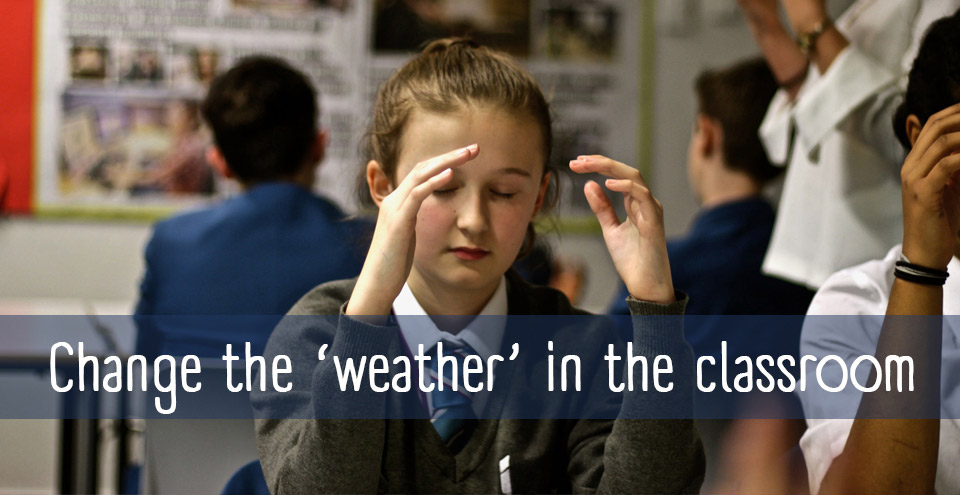Mindfulness. Why do it?

Mindfulness in schools can help young people not only to manage difficulties but to flourish. And it can also help their teachers.
What are the benefits?
If you hear somebody claiming mindfulness is a cure for everything then please be careful! Nevertheless there is a growing body of increasingly robust research which points towards tangible benefits both for young people and those who care for them. Check out our evidence base for a sample of this research, but here is a summary of perceived benefits:
For Students

Wellbeing and Mental Health
As well as helping them to recognise worry, manage difficulties and cope with exams, developing a more mindful awareness also helps children and young people to appreciate what is going well and to flourish.

Concentration and Cognition
Mindfulness trains us to understand and direct our attention with greater awareness and skill. This may improve the capacity of children to concentrate and be less distracted, as well as their working memory and ability to plan.

Social and Emotional Learning
Mindfulness is often taught in the context of PSHE. It helps to develop a greater awareness of relationships and how to manage them (including difficult ones at home), as well as offering a richer understanding of things like self-esteem and optimism.

Behaviour
Mindfulness may help the young to self-regulate more effectively, manage impulsivity and reduce conflict and oppositional behaviour. It should not, however, be used as a disciplinary tool.
Staff and children share their experience of mindfulness and .b
For Teachers
Mindfulness in schools is not just about children and young people; it is also very much about those who care for them. The benefits of mindfulness in the adult world are well-researched and the positive impact it can have on teachers, counsellors and carers is central to MiSP’s vision. These benefits include: stress regulation and reduction, increased self compassion and increased teaching efficacy.
What are the risks?
We would never claim that mindfulness works for all children and young people, but a significant finding from even the most robust research is that there seem to be very few negative impacts. Furthermore, we train teachers how to handle possible risks and insist that .b, Paws b, .breathe, dots and The Present are only taught within the safeguarding structure of a school. For an understanding of risk in mindfulness more broadly, read the Oxford Mindfulness Centre’s article: Is Mindfulness Safe?
School Community
Schools tell how they have introduced mindfulness and how their school has benefited.
Hear what students say
Class impact data showing what students say having completed the Paws b, .b or .breathe course.
What’s in the news
News articles from the mindfulness community and mindfulness in education.